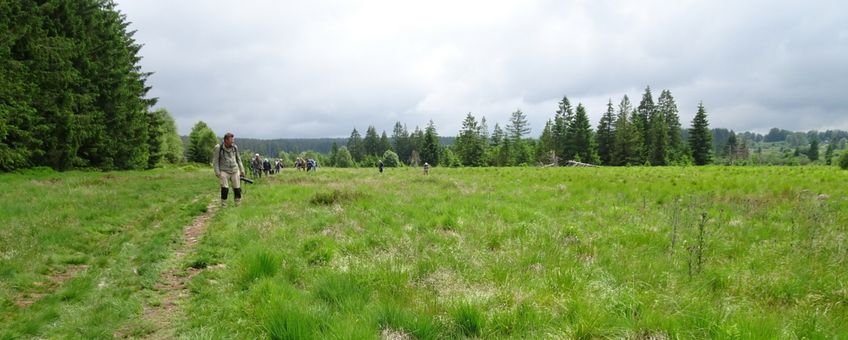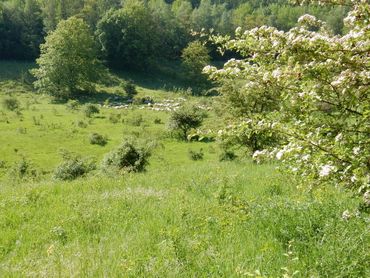

The EU nature restoration law shall respond to the environmental crisis at a scale that is commensurate with the magnitude of the challenges. Scientific evidence supports the need to develop and enforce an ambitious law that restores biodiversity and significantly contributes to mitigating climate change and adapting to its impacts while sustaining the supply of ecosystem services and the wellbeing of people.
 The Declaration so far gathered 1329 individual supports of scientists and experts from 32 European countries. Most importantly, the Declaration also has the support of 30 European networks and associations, from 12 countries and 5 European wide. Amongst these, prominent organisations like ALTER-Net (network of biodiversity research institutes from 19 European countries), the European Ecological Federation (grouping 19 national networks of ecologists), Eurosite (European network of conservation and restoration practitioners), the European Federation of Soil and Water Bioengineering and national affiliated organisations to SER Europe from France, Germany, The Netherlands, Portugal and Spain. The influential British Ecological Society is among the signatories as well.
The Declaration so far gathered 1329 individual supports of scientists and experts from 32 European countries. Most importantly, the Declaration also has the support of 30 European networks and associations, from 12 countries and 5 European wide. Amongst these, prominent organisations like ALTER-Net (network of biodiversity research institutes from 19 European countries), the European Ecological Federation (grouping 19 national networks of ecologists), Eurosite (European network of conservation and restoration practitioners), the European Federation of Soil and Water Bioengineering and national affiliated organisations to SER Europe from France, Germany, The Netherlands, Portugal and Spain. The influential British Ecological Society is among the signatories as well.
Contents of the Declaration
In 12 statements the Declaration addresses key issues for the future EU Nature Restoration Law:
An innovative ‘legal principle on ecological restoration’ should help to achieve the highest recovery possible for natural and semi-natural ecosystems and avoid greenwashing. In contrast, restoration in urban, intensive agricultural, and forestry areas can merely focus on remediation and rehabilitation actions (such as less use of pesticides, more green landscape elements, more deadwood, less fertilisation and draining, more ecological management of parks and gardens) without necessarily pursuing complete ecological integrity.
- The new law must complement the existing legal obligations such as the Birds and Habitats Directives, the Water Framework Directive and the Marine Strategy Framework Directive by adding clear deadlines, defining ambitious area targets in and outside the protected areas, and improving overall connectivity, in line with the ‘30 percent protected area target’ of the European Biodiversity Strategy 2030.
- All wetlands and freshwater ecosystems, forests, permanent (semi-natural) grasslands, and shallow marine areas deserve high priority for restoration because of their crucial role in climate change mitigation and adaptation.
- National restoration strategies should be evidence-based and consider both current and historical habitat distribution, conservation status, focus species and an overall reduction of pressures.
- Monitoring and reporting of restoration success using multicriteria sets of standards are mandatory.
- Restoration must be recognised as an investment, not a cost, and long-term earmarked funding is necessary. At the same time, damage to nature from climate and other policies needs to be avoided and adverse subsidies dismantled.
More information
- Read the whole declaration and see who support it (pdf: 529 KB).
Text: SER Europe and Kars Veling, Dutch Butterfly Conservation
Photos: Kars Veling

 An innovative ‘legal principle on ecological restoration’ should help to achieve the highest recovery possible for natural and semi-natural ecosystems and avoid greenwashing. In contrast, restoration in urban, intensive agricultural, and forestry areas can merely focus on remediation and rehabilitation actions (such as less use of pesticides, more green landscape elements, more deadwood, less fertilisation and draining, more ecological management of parks and gardens) without necessarily pursuing complete ecological integrity.
An innovative ‘legal principle on ecological restoration’ should help to achieve the highest recovery possible for natural and semi-natural ecosystems and avoid greenwashing. In contrast, restoration in urban, intensive agricultural, and forestry areas can merely focus on remediation and rehabilitation actions (such as less use of pesticides, more green landscape elements, more deadwood, less fertilisation and draining, more ecological management of parks and gardens) without necessarily pursuing complete ecological integrity.